All budget flights from the UK land in Kutaisi, and the city is also an interchange point for all public transport between Tbilisi and pretty much anywhere in western Georgia. So, regardless of whether you plan to, you will undoubtedly end up spending some of your time in Georgia, in Kutaisi.
We stayed in the city on two separate occasions: once on route from Kazbegi to Mestia (because it wasn’t possible to make the entire journey (which consisted of changes in both Tbilisi and Kutaisi) in one day) and once at the end of our trip, the night before our flight home to the UK.
We knew we didn’t have time to make it out to the Gelati Monastery (which the only reason we’d really considered stopping in Kutaisi for any longer than we actually did), so we didn’t really have very high expectations for Georgia’s second city. I guess that’s one of the major reasons I ended up being so pleasantly surprised by what I found.
About Kutaisi
Kutaisi served as the capital of the Kingdom of Georgia in the Middle Ages and later as the capital of Imereti. Nowadays it’s the country’s legislative capital (a similar situation to La Paz and Sucre in Bolivia; Tbilisi is the official constitutional capital) and is Georgia’s second largest city after Tbilisi (population 178,338).
Kutaisi also happens to be one of the oldest continuously inhabited cities in the world.
It’s got a completely different vibe to Tbilisi. Where Tbilisi feels multicultural, Kutaisi feels distinctly Georgian. Aside from a few cafe and restaurant staff (and those at the tourist information centre, obvs), barely anyone speaks English. And where Tbilisi has made its mark on the modern world, with structures like the Peace Bridge and urban spaces like Fabrika, in many parts of Kutaisi you do really feel as though you’ve wandered back in time.
Of course there are modern conveniences like wifi available (although in most places the connection speed is very slow), but the majority of cafes and restaurants we frequented, as well as both of the guesthouses we stayed at, were filled with vintage furniture and decorated with antiques, family memorabilia, and old black and white photographs.
5 reasons why you shouldn’t overlook a visit to Kutaisi
#1 Its star attraction – Bagrati Cathedral (and a couple of nearby monasteries)
Bagrati was built in 1003 by Bagrat III (hence the name). The cathedral was almost completely destroyed by a Turkish explosion in 1692 and, whilst intermittent restoration work earned it its Unesco World Heritage listing in 1994, it wasn’t completely renovated until 2009-2012. However, as a result of these latest renovations, Bagrati is ironically now in danger of losing its Unesco status due to the quantity of new materials used to facilitate the rebuild.
I must admit, it’s not the prettiest cathedral I’ve ever seen but it’s definitely an imposing structure, and its location on Ukimerioni Hill means that the views of Kutaisi are pretty spectacular from here, too.
Good to know: If you see two women on the gate who appear to be collecting entrance fees, take no notice: they’re begging. It’s actually completely free to enter the cathedral and its grounds.
The first of the two monasteries is the reason why many people decide to visit Kutaisi. It’s the primary reason we wanted to incorporate the city into our itinerary, too. However, once we’d decided to abandon the idea of hiring a car, we no longer had time to include a visit there (it’s 10 kilometres outside of Kutaisi) and I was gutted. I mean, just look at the incredible frescoes inside Gelati Monastery!
Image by albyantoniazzi via Flickr Creative Commons licence
Although more modest than Gelati, Motsameta Monastery commands stunning views of Imereti from its cliff-side location six kilometres outside of Kutaisi.
#2 Its old world charm and vintage vibe
I’ve touched on this earlier in this post and it’s one of the things I absolutely adored about Kutaisi. The city’s old world charm is what makes Kutaisi so unique. And if you’re partial to a spot of vintage decor, and love to hang out in cute, artsy, retro-themed cafes, then this city is right up your street.
One of the first things I noticed about Kutaisi is the fact that it’s petite (considering it’s the country’s second largest city) and pretty, with an abundance of parks and green spaces, and a wide river running through its centre.
You’ll find locals strolling along the riverside promenade, shopping at the vibrant fresh produce markets, relaxing under the shade of tall trees, and enjoying cups of strong coffee and good conversation across a table that wouldn’t look out of place in your nan’s living room.
But Kutaisi does have a few surprises up its sleeve. Considering that to most of the city, the definition of street art is probably a budding local painter recreating the scene before him on an old wooden easel, we were completely taken aback when we walked down a side street in the Old Town and found this:
#3 How affordable it is to stay here
There’s more information included later on in this post about the individual guesthouses we stayed at in Kutaisi. But essentially we found accommodation to be almost half the price of everywhere else in Georgia. We paid £31.05 for one night in an apartment (without breakfast) in Tbilisi, £27 for the same in Sighnaghi, lots, lots more for one night in a luxury hotel with an incredible breakfast in Kazbegi, and £27 for a night in a guesthouse with breakfast in Mestia.
Whereas in Kutaisi we paid £19 for a room in a guesthouse with breakfast and £15 for a room in a guesthouse without breakfast included. There were lots of cheaper options available too, with rooms from £4 on booking.com.
#4 The wonderful old town architecture
Kutaisi’s Old Town spreads out around Kutaisi Park on the eastern side of the Rioni River, and a quick wander around this area will take you past many of the architectural highlights in the city. I loved the Baroque-style Khareba church, which is actually a small replica of the Baroque church of Saint Petersburg, and as a result both its interior and exterior are very different to the majority of Georgia’s other churches.
The grand Colchis Fountain is also incredible. It’s a tribute to the ancient Kingdom of Colchis, which dates back to second millennium BC. Colchis incorporated what is now the western side of Georgia and its capital was Kutaisi. It was a kingdom that was renowned for being rich in gold, and the figures you see on the Colchis Fountain – mounted on blue mosaic pedestals – are large copies of the jewellery that was excavated at the archeological site of Vani.
Getting to the fountain involves a death-defying sprint through roundabout traffic arriving from every direction, and getting a decent photo of said fountain involves finding a gap amidst this traffic (unless you have a suitable wide-angle lens of course), but you’ll want to do it anyway. And although we didn’t return at night, I’ve been told that Colchis Fountain looks even more impressive after dark, when it’s illuminated in a variety of different, changing colours.
Other buildings you’ll want to stop and photograph are the Meskhishvili Theatre, the Opera Theatre, and Kutaisi City Hall.
#5 It makes a great base from which to explore western Georgia
Western Georgia is frequented by far fewer tourists than eastern Georgia – primarily because most visitors to the country head straight to Tbilisi and subsequently decide to base themselves there. However, if you want to explore parts of Georgia that are much less talked about by other travellers, but are equally as impressive, then you should definitely come to Kutaisi.
The surrounding area is rich in natural beauty and historical landmarks. It’s possible to visit any of the following as a day trip from Kutaisi:
Katskhi Pillar. Reminiscent of (a very small section of) Meteora in Greece, Katskhi Pillar is a natural limestone monolith located in the village of Katskhi. It’s 40 metres tall and on the uneven surface of the top of this pillar you’ll find a church dedicated to Maximus the Confessor, a crypt, three hermit cells, and a wine cellar (because this is Georgia and Georgians love their wine).
Distance from Kutaisi: 64 kilometres / 1 hr 11 minutes by road
Photo by ლევან ნიორაძე via Flickr’s Creative Commons licence
Chiatura. The Georgian mining town of Chiatura is located in a beautiful gorge on the banks of the Qvirila River, and is famous for its Soviet era aerial tramways – known as “rope roads” – that were built on the order of Stalin himself. It’s still possible to ride these cable cars (if you dare!) and I hear it’s an incredible experience.
Distance from Kutaisi: 72.5 kilometres / 1 hr 20 minutes by road (can be visited in conjunction with the Katskhi Pillar).
Borjomi. A town that’s famous for its naturally carbonated mineral water from springs in the Borjomi Gorge. Borjomi mineral water is actually Georgia’s number one export.
Distance from Kutaisi: 130 kilometres / 2 hrs 10 minutes by road
Prometheus Cave. A 1.4 kilometre-long cave located near the Georgian town of Tskhaltubo, northwest of Kutaisi. There are six large chambers and a 400-metre-long underground lake. Prometheus Cave was only discovered as recently as 1984.
Distance from Kutaisi: 21.7 kilometres / 30 minutes by road.
Sataplia Nature Reserve. Not only is this nature reserve is covered in thick, subtropical Colchic forest with a couple of panoramic lookout points, but it’s home to a couple of dozen 120-million-year-old, fossilised dinosaur footprints.
Distance from Kutaisi: 11.5 kilometres / 22 minutes by road.
How to get to Kutaisi
By air
As I mentioned previously, if you’re booking a flight with budget airline, Wizz Air, you will find yourself touching down in the city of Kutaisi (it’s only Georgian Airways flights that land in Tbilisi). Skyscanner is my go-to site for searching and booking flights. We paid £90 for return flights from London Luton in June.
Kutaisi’s small airport is located around 20 kilometres (or a 30-minute drive) from the centre of the city. The cheapest way to get from the airport into the city is to hop on a Georgian Bus. The times are scheduled to coincide with the flights in and out of the airport. A one-way fare will cost you 5 GEL.
Overland
As I mentioned earlier on in this post, Kutaisi is a major interchange point for transportation between eastern and western Georgia so it’s really easy to get here from almost everywhere else in the country, either by train or minivan (marshrukta). We didn’t end up using the train during our trip, but you can find a full schedule of Georgia trains on the Avantour website.
We used the Georgian Bus to travel from Kutaisi to Tbilisi (a one-way fare was 20 GEL), but it’s also possible to make the four-hour journey by marshrutka. In fact, marshrutky were the primary form of transport we used to travel around Georgia. If you’re thinking of visiting Svaneti, there’s only one marshrutka per day to Mestia, which leaves at 9am. The journey takes between four and a half and five hours and costs 25 GEL.
Visit Kutaisi publish a full marshrutka timetable on their website, although I’m not sure how frequently the information on here is updated. I’d advise speaking to the staff at the Kutaisi Tourist Information Centre to double-check any information. You can find them at 9a Rustaveli Avenue.
Kutaisi’s bus station is just under four kilometres south west of the city centre, on Chavchavadze Avenue 67.
Where to stay in Kutaisi
Because Kutaisi is nowhere near as popular with tourists as Tbilisi, accommodation is A LOT cheaper here. In fact, the cheapest place we stayed during our entire 10-day Georgia trip was in Kutaisi.
While searching online for places to stay prior to our trip, we also discovered that the majority of accommodation in Kutaisi is a homestay-style set up, where you stay in a room in the host’s home, you share facilities, and normally breakfast is included. In our experience though the hosts rarely speak English, so – unless you speak Georgian or Russian – it’s rather difficult to ask for a key to your room, enquire as to what time the main door is locked, or tell your hosts when you’d like breakfast. In fact, it’s rather difficult to communicate much at all.
But don’t let this deter you; we had the sweetest hosts at both places we stayed. The grandmother at Panorama Guest House in particular treated us like family as soon as we arrived, hugging us, patting us and cupping our hands in hers. I totally wanted to pack her in my suitcase backpack and take her home with me.
It’s also worth noting that you’ll probably feel like you’re staying in a museum or some kind of vintage emporium when you walk through the doors of your Kutaisi guesthouse. We absolutely loved it because it was so different to our experience of a modern, design apartment in Tbilisi.
We stayed in two different places in two contrasting areas of the city:
Panorama Guesthouse
If you consider the centre of the city to be the main square then Panorama is the more central of the two guest houses. It’s just a few minute’s walk from Colchis Fountain and Kutaisi’s City Hall, but it is uphill, so bear that in mind if you’re arriving with suitcases.
The room we stayed in was huge, with a massive king-size bed, piano and chandelier. The bathroom is shared (and you do have to walk through the dining room to access it), but only with one other room I believe, and the breakfast is an amazing feast of hot and cold local food.
You can check availability and prices here. We paid £19 (65 GEL) for this room below.
Good to know: the guest house is rather difficult to find. There’s no sign outside indicating its name, you basically get as far as the number you’re looking for (number 44) and then walk through an open gate into a courtyard. From there you kind of double-back on yourself and walk up some stairs. We would never have found it if it weren’t for one of the local kids (may even have been one of the great grandchildren of the family who live there) who found us looking lost on the street outside.
Sun Guesthouse
On the opposite side of the river in a lovely historic area just below the Bagrati Cathedral, the Sun Guest House is just a minute’s walk from the Rioni river, and many of its rooms (including its terrace) offer wonderful river views, as well as views of the Baroque style Khareba Church.
Again the rooms here are huge (we had a double bed and two single beds in ours), and decked out with antique fixtures and fittings, books and old family photographs.
This guest house is more like a guest house than a homestay (we were actually given a key to our room!). Unfortunately breakfast is not included in the room price, but you can always buy your own and eat it out on the terrace, or pop up the road to Our Garden Cafe. If you’re a cat lover, you’ll be pleased to know that you can also find this adorable feline wandering around the grounds.
You can check availability and prices here. We paid £15 (49.50 GEL) for a room with this incredible view.
Good to know: This guesthouse is also located uphill, but it’s more of a leisurely climb which follows the road as it weaves its way up to Bagrati Cathedral. If you’re in a taxi, you may struggle communicate the guesthouse’s exact location with your taxi driver. Most taxi drivers speak little or no English; ours heard the word “Bagrati” (as the guesthouse is located on “Bagrati Street”) and proceeded to try and drop us at the cathedral!
Alternatively you can search all available accommodation options on booking.com below. If you’d like £15 off your next stay, make sure you book via my referral link here.
Where to eat in Kutaisi
In all honestly, we didn’t have long enough in Kutaisi to sample that many different cafes and restaurants, but we loved the following two places for very different reasons.
Palaty. Cosy little restaurant that serves traditional home-cooked food in a friendly, intimate environment. The decor has a distinct musical theme, with a piano in the corner of the room, old gramophones on display, and black and white photos of musicians adorning the walls. We were even fortunate enough to be treated to a impromptu piano and violin recital by what we assumed to be the mother and daughter of the house.
Sapere. On the opposite side of the Rioni river to the centre of the city (but still only a few minutes’ walk away), Sapere has a much more contemporary look and feel to it in comparison to Paraty. It’s akin to an upmarket wine bar you’d find in western Europe and with prices to match. But this is Georgia: even the more expensive places are still really affordable. The food is modern Georgian, and I can definitely recommend that you try some of the wine here too!
We almost ended up eating at nearby El Depo (because it’s supposed to be one of the best places to try Khinkali (Georgian dumplings)) but what swung it for us was this wonderful rusty motor parked outside of Sapere. I think it’s actually a permanent fixture, but either way it definitely attracted a lot of attention during our visit (we snagged the table right beside it).
If you like this article, please share it on social media using the share buttons at the top of the post. And if you’d like to save it for reading later, why not pin to one of your Pinterest boards? Alternatively you can follow along on Facebook, Twitter, or Google+ or you can look me up on Instagram or Pinterest too!
**Some of the links in this post are affiliate links. All this means is that if you make a purchase through one of the links I have provided, I will earn a small commission as a result but the cost to you will remain exactly the same**




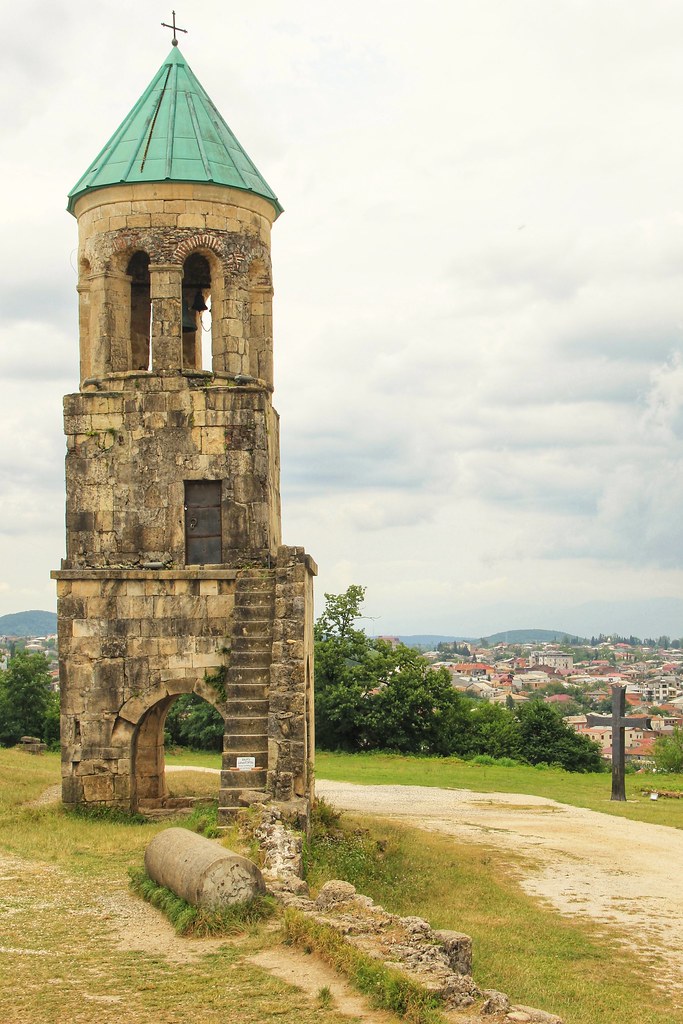
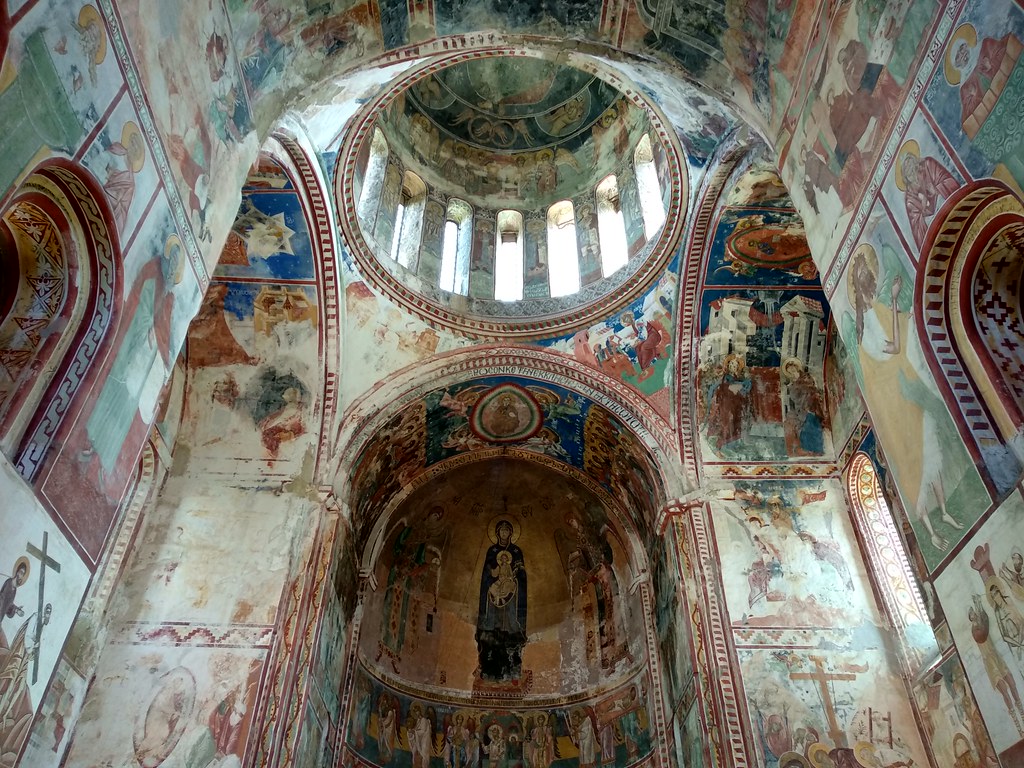
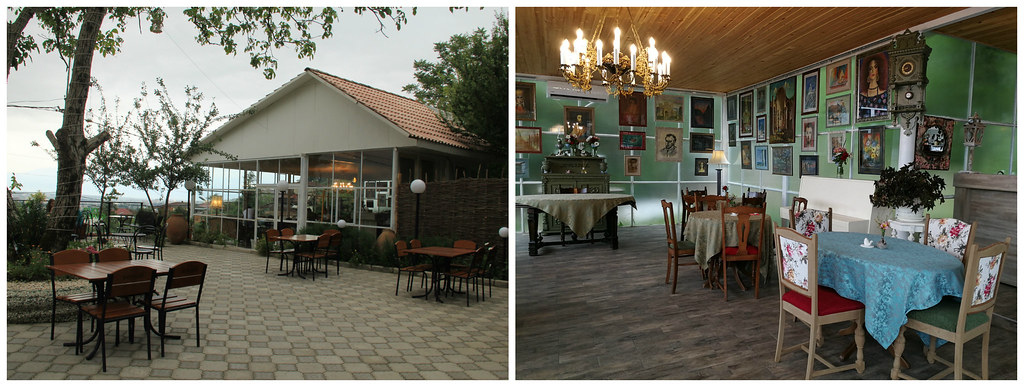


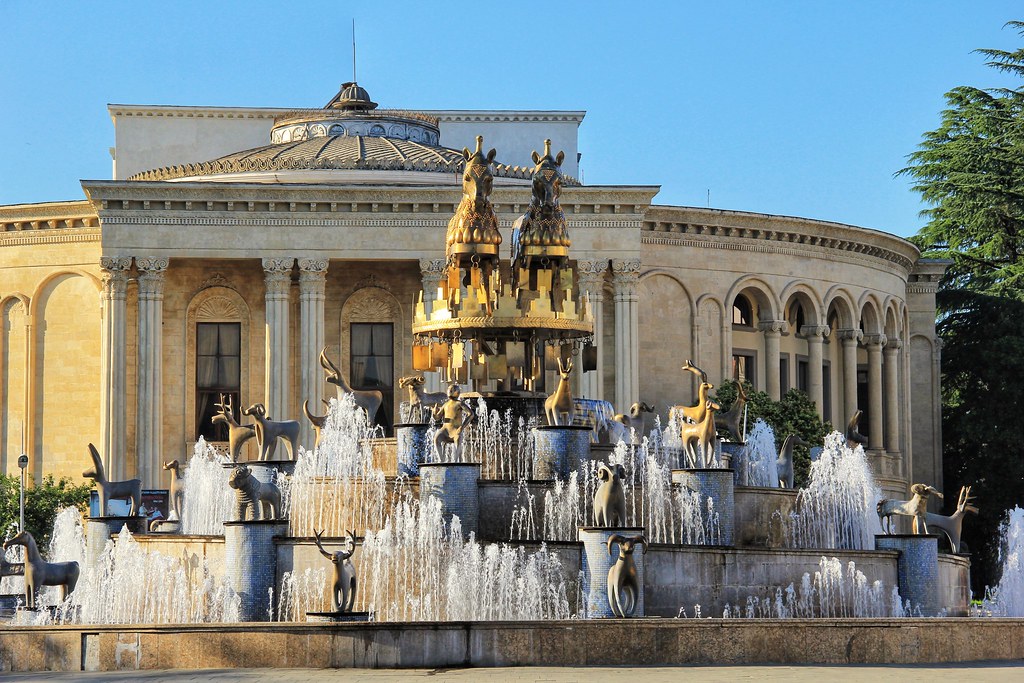

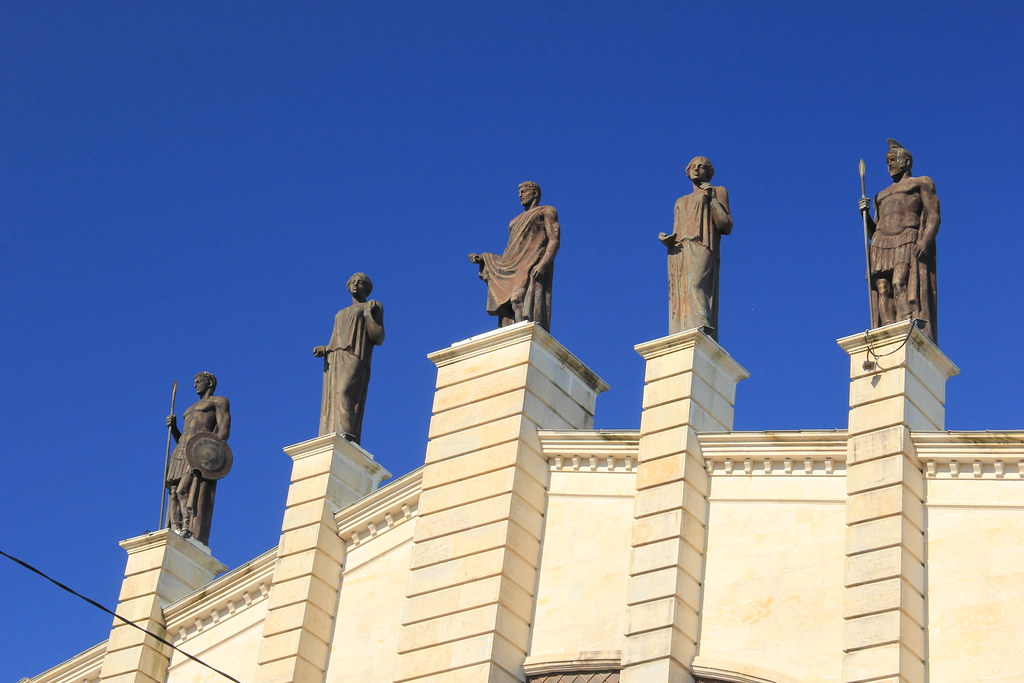




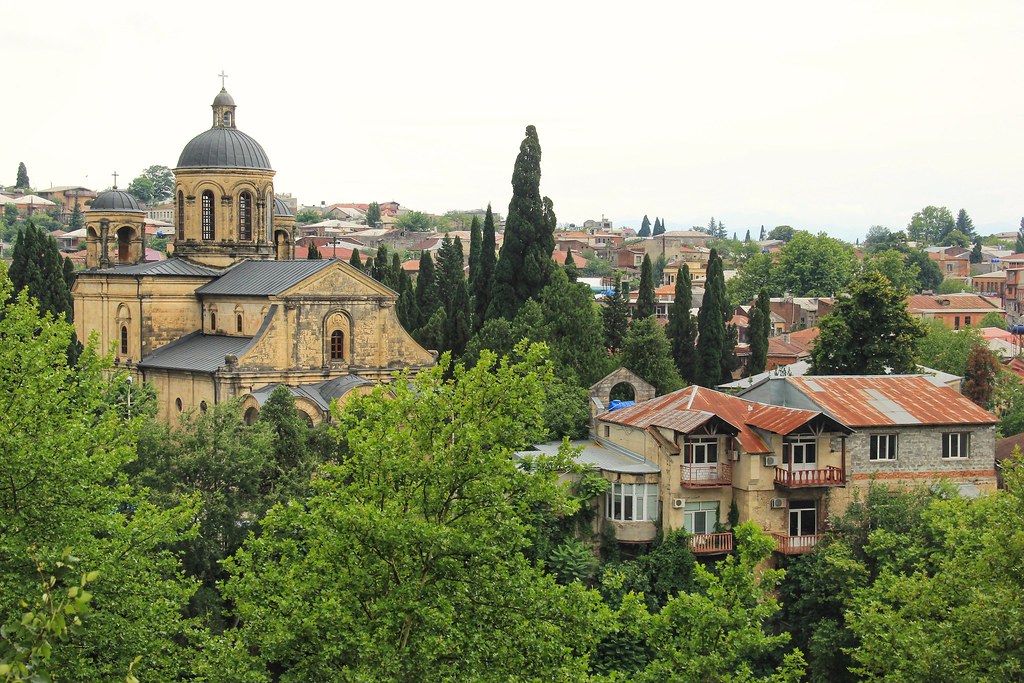








5 Comments
Ok so I’m flaunting my passport privilege but…I just learned I can stay in Georgia visa-free for one year! I’m so going to sift through all your amazing posts once I decide when to go. Thanks for sharing all your intel!
Ahhh, you lucky thing! It’s such an affordable country to travel/stay in as well. I would’ve stayed longer if I didn’t have a job to go back to in England. Definitely one of my new favourite countries 😊
Ah I love Georgia! I spent two months there last year! I’m itching to go back and explore more.
Two months, wow! You must have been everywhere! (well, almost ;-)) Which were your favourite parts?
OMG I love Georgia! Best wine, awesome people.